Equipment used for REW analysis
Krk rokit 6 monitors
Behritone cube mono speaker
Behringer ECM 8000 omni directional microphone
Room dimensions
26 ft length
12 ft width
8 ft ceilings
Construction details
Two walls are concrete. The 24 ft section and the 5 ft section.
The flooring used is tiles. (Should I cover the tile floor eventually ?)
There are four doors in this space which makes things more difficult. Also due to the odd shape there are really seven floor wall corners. In the photos provided, I have constructed two superchunk traps, with mineral wool packed floor to ceiling. The attached REW files and graph image measurements were taken with the three traps in the room. I do not have any REW measurements of the toom without treatment. Perhaps that is a mistake ?
The Krk monitors are two feet away from the wall.
The desk is 2ft off the ground.
The monitors are spaced four feet apart.
The front superchunk trap was packed with owens corning thermafiber and ultratouch denim insulation. The thought here is that a variation in density of absorption material would theoretically absorb more of the overall frequency response, particularly the mids and highs.
Within the master handbook of acoustics chapter on absorption the text states , “materials that have a porous composition with interstices between there matters can operate as porous absorbers” p 191
“If a sound wave strikes a wad of cotton batting, the sound energy causes the cotton fibers to vibrate”
So in essence this is simply energy transference. In this case sound energy is transferred via friction into heat energy.
“Cotton and many open cell foams are excellent sound absorbers because of their open-cell porosity” p 191
“The better the airflow through a porous material, the better its ability to absorb sound” p 191 of master handbook of acoustics
So if all this is true, why is it that the majority of projects use dense less porous material if airflow is such a critical factor to absorption? Is it simply that the denser glass fiber is easier to work with than more porous alternatives ? Or is the issue money ? The denim insulation is 60 $ per bag which does add up fast.
In the construction of these absorbers, is it worth the individuals time, and effort to construct panels that contain a density variation in order to obtain superior absorption ?
I am very new to acoustic, and have gained a lot of knowledge through the comprehensive collection of acoustics study material available here. I truly wish to express my gratitude to the effort people made to make this material so readily available.
This “little” project has quickly turned into an obsession as I become more aware of just how important the acoustics of a room is. Sound is fascinationg. Ifd only we could dye soundwaves with different colors and see it traveling in real time.
As far as construction changes is there anything about this room construction that if changed would make a drastic difference. By construction I mean walls, doors, flooring, and ceiling alterations.
As far as the acoustics goes goes, based on my Rew measurements what is the best direction to go in ? MY thought was to post what I am working with now then based on feedback I can add treatment in increments with the REW file. Because I do not know what I'm doing I'm afraid of putting a lot of work into this, then find out after the fact I did something wrong.
Does placing diffusion in a room this size make sense ?
With the vast amount of different types of treatment; from simple absorption panels, to helmholtz resonators, to slat absorbers, to cylindrical absorbers it is hard to know what direction is best suited with this room. Also as I read more different people have conflicting opinions. My goal is to get the room as acoustically accurate as I can on a budget using DIY methods, while at the same time gaining a basic knowledge and understanding of sound.
Are there any books that are a must read ?
Thanks for checking out my thread !
Krk rokit 6 monitors
Behritone cube mono speaker
Behringer ECM 8000 omni directional microphone
Room dimensions
26 ft length
12 ft width
8 ft ceilings
Construction details
Two walls are concrete. The 24 ft section and the 5 ft section.
The flooring used is tiles. (Should I cover the tile floor eventually ?)
There are four doors in this space which makes things more difficult. Also due to the odd shape there are really seven floor wall corners. In the photos provided, I have constructed two superchunk traps, with mineral wool packed floor to ceiling. The attached REW files and graph image measurements were taken with the three traps in the room. I do not have any REW measurements of the toom without treatment. Perhaps that is a mistake ?
The Krk monitors are two feet away from the wall.
The desk is 2ft off the ground.
The monitors are spaced four feet apart.
The front superchunk trap was packed with owens corning thermafiber and ultratouch denim insulation. The thought here is that a variation in density of absorption material would theoretically absorb more of the overall frequency response, particularly the mids and highs.
Within the master handbook of acoustics chapter on absorption the text states , “materials that have a porous composition with interstices between there matters can operate as porous absorbers” p 191
“If a sound wave strikes a wad of cotton batting, the sound energy causes the cotton fibers to vibrate”
So in essence this is simply energy transference. In this case sound energy is transferred via friction into heat energy.
“Cotton and many open cell foams are excellent sound absorbers because of their open-cell porosity” p 191
“The better the airflow through a porous material, the better its ability to absorb sound” p 191 of master handbook of acoustics
So if all this is true, why is it that the majority of projects use dense less porous material if airflow is such a critical factor to absorption? Is it simply that the denser glass fiber is easier to work with than more porous alternatives ? Or is the issue money ? The denim insulation is 60 $ per bag which does add up fast.
In the construction of these absorbers, is it worth the individuals time, and effort to construct panels that contain a density variation in order to obtain superior absorption ?
I am very new to acoustic, and have gained a lot of knowledge through the comprehensive collection of acoustics study material available here. I truly wish to express my gratitude to the effort people made to make this material so readily available.
This “little” project has quickly turned into an obsession as I become more aware of just how important the acoustics of a room is. Sound is fascinationg. Ifd only we could dye soundwaves with different colors and see it traveling in real time.
As far as construction changes is there anything about this room construction that if changed would make a drastic difference. By construction I mean walls, doors, flooring, and ceiling alterations.
As far as the acoustics goes goes, based on my Rew measurements what is the best direction to go in ? MY thought was to post what I am working with now then based on feedback I can add treatment in increments with the REW file. Because I do not know what I'm doing I'm afraid of putting a lot of work into this, then find out after the fact I did something wrong.
Does placing diffusion in a room this size make sense ?
With the vast amount of different types of treatment; from simple absorption panels, to helmholtz resonators, to slat absorbers, to cylindrical absorbers it is hard to know what direction is best suited with this room. Also as I read more different people have conflicting opinions. My goal is to get the room as acoustically accurate as I can on a budget using DIY methods, while at the same time gaining a basic knowledge and understanding of sound.
Are there any books that are a must read ?
Thanks for checking out my thread !
Attachments
-
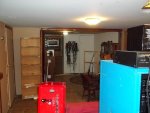 100_0207.jpg76.2 KB · Views: 24
100_0207.jpg76.2 KB · Views: 24 -
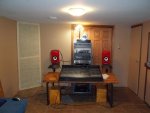 100_0208.jpg66 KB · Views: 19
100_0208.jpg66 KB · Views: 19 -
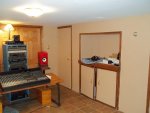 100_0211.jpg73.3 KB · Views: 23
100_0211.jpg73.3 KB · Views: 23 -
 100_0213.jpg81.2 KB · Views: 16
100_0213.jpg81.2 KB · Views: 16 -
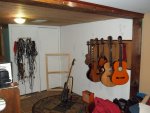 100_0214.jpg85.9 KB · Views: 14
100_0214.jpg85.9 KB · Views: 14 -
 All SPL screenshot.jpg57.3 KB · Views: 15
All SPL screenshot.jpg57.3 KB · Views: 15 -
 left and right.jpg72.2 KB · Views: 29
left and right.jpg72.2 KB · Views: 29 -
 left and right decay.jpg76.4 KB · Views: 15
left and right decay.jpg76.4 KB · Views: 15 -
 mono cube speaker decay.jpg76.1 KB · Views: 21
mono cube speaker decay.jpg76.1 KB · Views: 21 -
 right speaker decay.jpg75.8 KB · Views: 21
right speaker decay.jpg75.8 KB · Views: 21 -
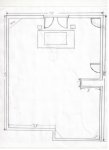 room layout.jpg27.2 KB · Views: 13
room layout.jpg27.2 KB · Views: 13 -
 waterfall left speaker.jpg72.4 KB · Views: 19
waterfall left speaker.jpg72.4 KB · Views: 19 -
 water fall right speaker.jpg84.4 KB · Views: 20
water fall right speaker.jpg84.4 KB · Views: 20
